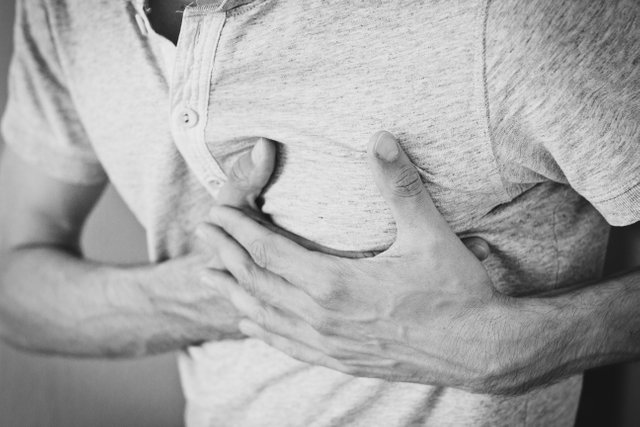Can you sense sudden cardiac arrests beforehand? Study shows how symptoms differ in men and women
Most research has been done with men in focus because of their pronounced symptoms. Women have missed reporting their discomfort or been overlooked because they don’t have classical textbook symptoms. A post-menopausal woman should watch out for a racing heart and sudden breathlessness, says Dr Ambuj Roy, Professor of Cardiology at AIIMS, Delhi
With reports of sudden cardiac arrests among those under 50 on the rise, a new study now says that half of those experiencing such episodes also had a telling symptom 24 hours before and the warning symptoms were different between men and women. Will this finding help us prevent sudden cardiac arrests and mortality? The abrupt loss of heart function, brought on by rhythm disturbances in the heart, needs to be attended to within minutes for reviving the patient. So an awareness of precursor symptoms means treatment can be started that much earlier.
Researchers from the Smidt Heart Institute at Cedars-Sinai Health System in Los Angeles, US, have found that the most prominent symptom for women 24 hours before a cardiac arrest was shortness of breath. For men, chest pain was the dominant symptom and, therefore, more discernible and felt. Does this mean that women’s symptoms, because they are milder, are often missed? Says Dr Ambuj Roy, Professor of Cardiology at AIIMS, Delhi, “So far all the research has been done with men in focus because of their pronounced symptoms. Women have missed reporting their discomfort or been overlooked because they are not classical textbook symptoms.”
How does cardiac arrest manifest in men and women differently?
A sudden cardiac arrest isn’t the same as a heart attack. A heart attack is caused by blockages or plaque deposits and clotting in arteries which restrict blood flow to the blocked parts of the heart, causing muscle scarring. A sudden cardiac arrest is not caused by a blockage but by irregularity in heartbeats. However, if the heart attack can change the heart’s electrical impulses and cause irregular heartbeats, then it could become a trigger for a sudden cardiac arrest. A heart attack is quickly identifiable with ECG changes. But a sudden cardiac arrest doesn’t give you that time.
Now men have pronounced symptoms of discomfort that make diagnosis easier. Women do not have so much chest pain and they present what are called atypical symptoms, such as breathlessness, palpitations and a lot of sweating or pain in the arms with pain in the upper abdomen. They are easily missed because doctors are looking for mostly classic textbook symptoms.
What are the reasons behind differing symptoms between men and women?
There is no known reason so far. It could be a difference in perception that men are more likely to have such an episode than women.
Has age also got to do something with cardiac arrest manifesting differently in men and women?
Both elderly men and women do not have typical signs and symptoms of a sudden cardiac arrest, they have a dull chest pain and more palpitations and breathlessness. While women are protected by the hormone estrogen during their reproductive years, unless they smoke or have diabetes, post-menopause this shield disappears. Then they have an equal risk as men. So they obviously need to be more careful in this phase of life, develop a healthy lifestyle and control their risk factors.
How does fitness play a role here?
Any kind of heart attack because of blockages or even a rhythm disturbance doesn’t develop in one day. It is just that the trigger that precipitates the heart attack happens in one day but the risk level has been rising over years of not attending to your body. The heart is a muscle and to keep it in good condition, doctors advise a moderate physical activity, proper diet and adequate sleep.
How should women look at arrhythmia?
They should consult a doctor if they feel their heart racing or have dizzy spells. They should get their arrhythmia treated with medication. Sometimes, their arrhythmia could be a result of coronary artery disease. Sometimes, it could be stress cardiomyopathy, which may be a fallout of depression and anxiety. It manifests in middle-aged women faster than other age groups. A woman’s risk of developing the condition increases five times after the age of 55. This condition can rapidly weaken the heart muscle. Stress means excess adrenaline, which sometimes binds itself to the heart cells, causing large amounts of calcium to enter the cells and disrupt heart rhythms. Estrogen prevents the adrenaline from damaging the heart, so women in the post-menopausal age should watch out for the frequency of the dullest chest pain or shortness of breath.

Treatments are the same but unfortunately women are far less likely to get the optimum treatment because they are not diagnosed. Often women don’t get primary angioplasty done, which is a treatment of choice. We open the artery and open the blockage that may trigger a sudden cardiac arrest in the future.
You've got a free upvote from witness fuli.
Peace & Love!
Downvoting a post can decrease pending rewards and make it less visible. Common reasons:
Submit
Thanks for you vote
Downvoting a post can decrease pending rewards and make it less visible. Common reasons:
Submit